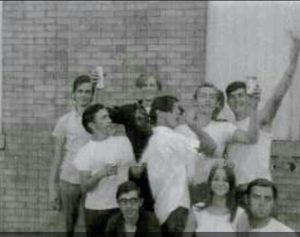| Origins | Annexed in 1889 |
|---|---|
| Area | Far Southeast Side |
| Boundaries | 76th Street on the north, 87th Street on the south, South Chicago Avenue on the east, railroad tracks by Woodlawn Avenue on the west |
This area was not settled much until the late 1880s because this area was extremely swampy and full of mosquitos. Early Irish and German settlers needed to build their houses on stilts in order to prevent flooding from this marshland. This area also became an ideal place for dumping garbage in the early days.
In the year 1888 Johnathon Pierce had a vision to create a town in this swampy area that would be called “Pierce’s Park” and construction began as more Irish and Germans moved to this community, then the area was annexed in 1889 into the city of Chicago which made the area more attractive to German and Irish workers, then the area was further recognized in 1893 after the World’s Columbian Exposition on the south side.
The final attraction that brought this area more settlement was the drainage system that was dug in the year 1900 that made this area no longer a marshy swampland. The community developed the nickname “Pennytown” but in 1910 the neighborhood was permanently renamed “Avalon Park.” The neighborhood continued to develop as more housing was put in for working classes.
The 1920s saw a boom in the area as more factories were built up near the neighborhood causing more homes to be built. A wave of Swedish immigrants made their way into this neighborhood during this housing boom of the 1920s. Another wave of houses were built up in the neighborhood right after World War II along with apartment complexes because of the growing steel mill and industrial plant opportunities. A shopping strip was built up near 79th Street and Stoney Island Avenue.
In the 1950s and 1960s there was some greaser gang activity but it was not much of a major force. In the 1960s working class white families began to move out of the neighborhood as middle class and upper middle class African American families moved into the community. The transition from white to black was rapid; however, the value of the neighborhood actually increased because the black families that were moving in were higher income and held such prestigious positions such as doctors, lawyers etc…, by 1970 the neighborhood was over 83% black and by 1980 over 96% black.

Avalon Park is like a island because it is still a black middle class neighborhood and residents are opposed to gang activity and crime; however, residents often deal with drifting gang activity from the higher crime neighborhoods surrounding it. Sometimes Avalon Park acts as a gated type community as they are watchful of roving criminal activities. This neighborhood mostly discourages gang activity and often scores as one of the safer neighborhoods in Chicago or at least scores in moderation. At times the roving crime has gotten Avalon on the top 25 most violent neighborhoods list when its borders are infringed upon, especially along the 79th Street border.
Besides greaser gangs of the past Avalon Park has seen four major gangs set up turf here which may not even be active anymore. Gangster Disciples, Black P Stones, Mickey Cobras and Four Corner Hustlers have all settled here at one time but they didn’t usually last long. I do not know when in history the gangs arrived but most of the activity happened at 81st and Woodlawn.
The main gangs that have ever walked these streets are:
Black P Stones
81st & Woodlawn
Four Corner Hustlers
81st & Woodlawn
Mickey Cobras
85th & Dante
Gangster Disciples
82nd & Cornell
